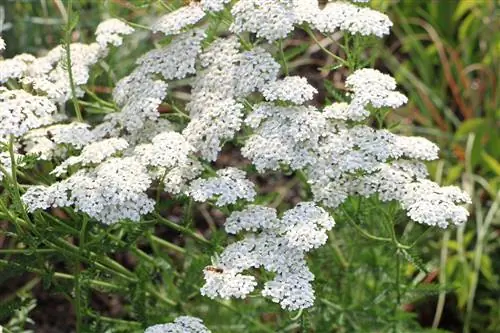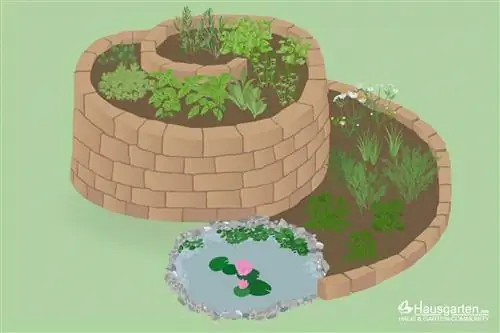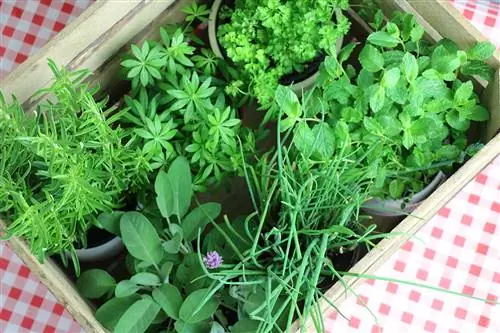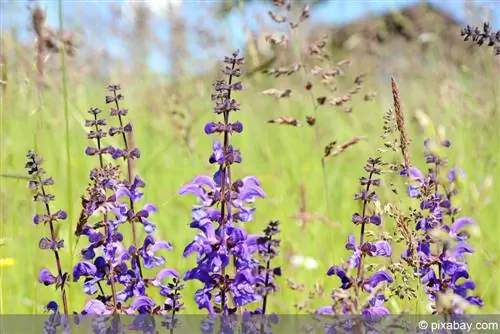- Author admin [email protected].
- Public 2023-12-17 03:39.
- Last modified 2025-01-24 12:45.
Herb meadows are very popular, after all they bloom for a very long time and are very easy to care for. The most important thing for long-lasting blooms is the professional creation of the herb meadow, which is why we give you 6 useful tips for this in this article!
Choice of location
A herb meadow can basically be integrated into any garden, although little or unused areas are best suited. For example, former lawns are often converted into a herb lawn. However, it is also possible to turn only certain parts of the lawn into a poor meadow. It is important that the location has the optimal conditions for a wild herb meadow:
- Sunny and not too shady
- Not too humid
- Well permeable to water
- Low impact on footwear
- Low-nutrient soil
Soil depletion
Once a suitable spot has been found in the garden, the soil should be checked for its properties. Herbal lawns thrive best on nutrient-poor soils, which is why it makes sense to slim down nutrient-rich soils before sowing. This prevents certain grasses from growing too quickly due to the high nitrogen content in the soil and thereby displacing wild herbs and flowers. However, if the nutrient content in the soil is low, the desired wild plants can establish themselves on the poor meadow. To slim down the soil, hobby gardeners best proceed as follows:
- It is best to stop fertilizing 2-3 years before sowing
- Mow the meadow several times a year
- Remove cuttings (e.g.: compost or feed)
- Removing humid layers
- Mix in the sand
Seed selection
The selection of possible plants for the herb meadow is large and therefore enables very species-rich planting. Regionally typical seeds that contain a mixture of grasses, herbs and flowers are best. Caution is advised with ready-made seed mixtures, as they often do not offer a varied herbal picture and/or contain non-native plants. The latter is a disadvantage because the plants usually only grow as annuals due to a lack of pollinators. To avoid this, hobby gardeners can also make their own seed mix. In local regions, the following plants, among others, are suitable for herb lawns:
- Bärwurz (Meum athamanticum)
- Honorary Award (Veronica)
- Field thyme (Thymus serpyllum)
- Spring cowslip (Primula veris)
- Bellflower (Campanula)
- Gold poppy (Eschscholzia californica)
- Heather carnation (Dianthus deltoides)
- Daisies (Leucanthemum)
- Yarrow (Achillea millefolium)
- Violet
- Wild strawberry (Fragaria vesca)
- Meadowfoam (Cardamine pratensis)
Note:
Species-rich planting not only ensures a varied display of flowers, but also provides valuable food for numerous insects!
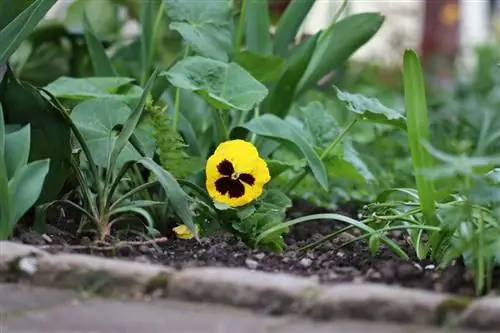
Sowing
The best time to testify is between mid-April and mid-June. Once the time for sowing has been chosen, the herb meadow should rest for three to four weeks before the seeds are sown. Sowing the seeds is then done as follows:
- Leveling and finely raking herb lawns
- Remove larger stones and roots
- Distribute seeds lengthwise and crosswise over the area
- Mix in fine sand (e.g. bird sand)
- Roll the entire surface
- Do not rake seeds with a rake or rake!
- Seeds cannot sprout if they are covered with more than 1 cm of soil
Note:
It takes up to eight weeks for the seeds to germinate.
Weed cutting
In the first year of sowing, it is very common for weeds to spread across the wild herb meadow. To prevent it from spreading further, the herb lawn should be subjected to a so-called “weed trimming”. This measure not only prevents the spread of weeds, but also promotes the growth of wild herbs. It is best to cut weeds when the weather is good, but also note the following:
- Mow the entire area as soon as plants are about 10 cm high
- Let the cuttings lie on the surface for about 3 days
- Existing seeds can spread as a result
- Mow again after a few weeks
- Maximum 3 cuts per sowing year
- From the 2nd year onwards, mow only twice a year (e.g. in July and September)
Note:
Morning glories and thistles are particularly proliferative, which is why it is advisable to remove them immediately.
Care of the wild herb meadow
The plants in a wild herb meadow generally prefer nutrient-poor soil, which is why fertilizing is generally not necessary. The watering of wild herbs is usually done by nature, which is why watering is only recommended during long dry periods. Mowing the herb meadow is also not absolutely necessary, but is definitely recommended as it promotes the growth of the herbs. However, hobby gardeners do not have to use a scythe regularly, as the following two variants are usually sufficient:
- Lawn cutting before winter
- Or mow twice a year
Note:
Motor scythes or meadow mowers are particularly suitable for mowing wild herb meadows.

